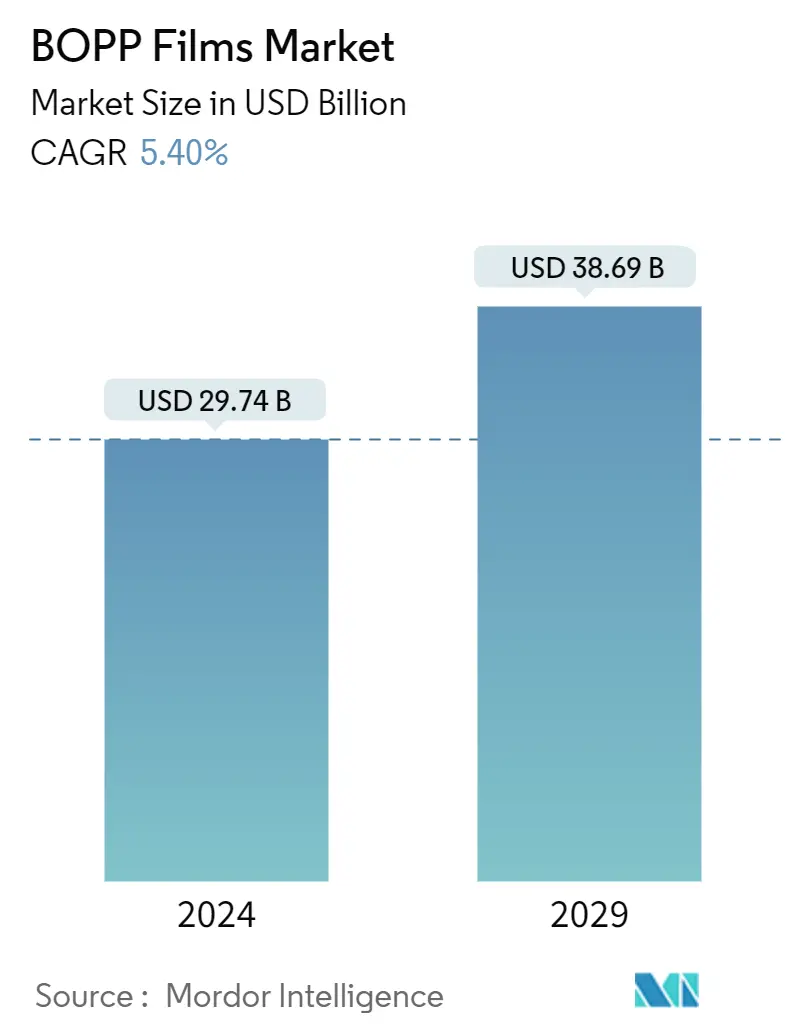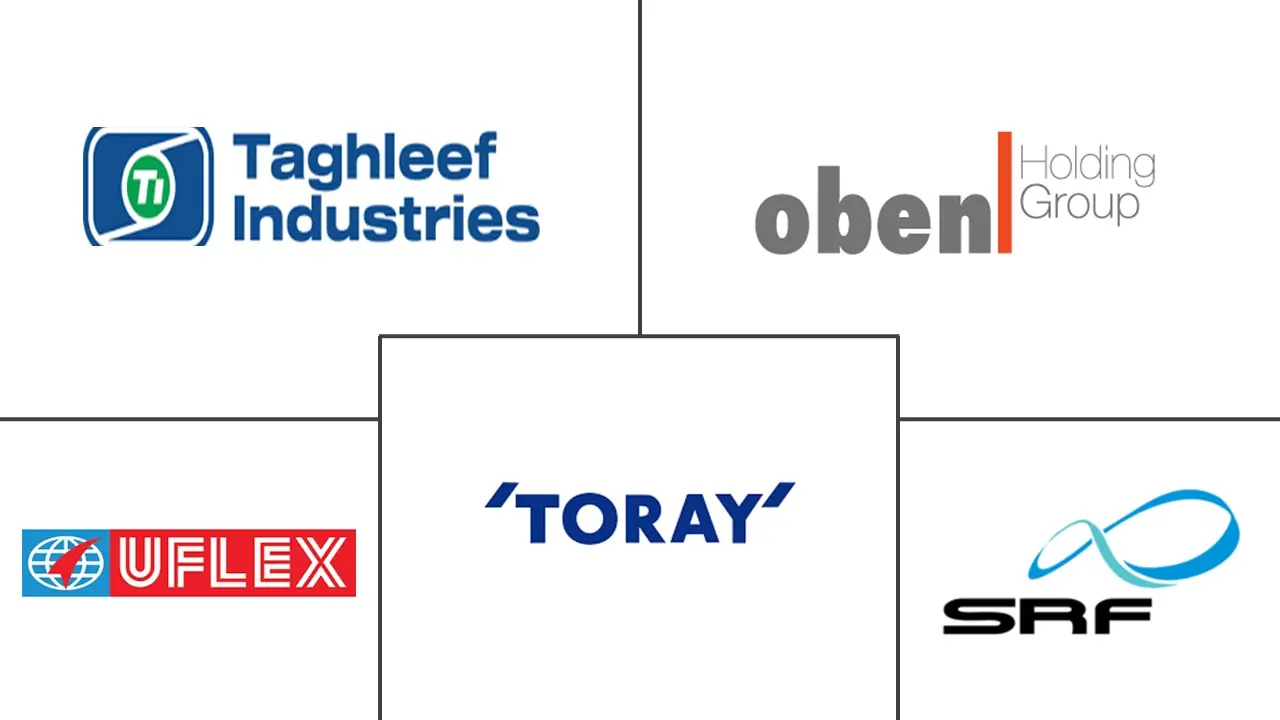Market Size of BOPP Films Industry

| Study Period | 2019 - 2029 |
| Market Size (2024) | USD 29.74 Billion |
| Market Size (2029) | USD 38.69 Billion |
| CAGR (2024 - 2029) | 5.40 % |
| Fastest Growing Market | Asia Pacific |
| Largest Market | North America |
Major Players
*Disclaimer: Major Players sorted in no particular order |
Need a report that reflects how COVID-19 has impacted this market and its growth?
BOPP Films Market Analysis
The BOPP Films Market size is estimated at USD 29.74 billion in 2024, and is expected to reach USD 38.69 billion by 2029, growing at a CAGR of 5.40% during the forecast period (2024-2029).
Owing to its flexibility and speedier packaging with better-sealing properties than other packaging materials, the market trend is forecasted to increase the demand for BOPP films.
- The packaged food industry's BOPP film market has grown significantly recently. BOPP films are widely used in packaging various food products due to their excellent barrier properties, transparency, and printability. Companies are collaborating to design products from waste and residue streams.
- In October 2022, A novel BOPP-based food packaging film developed by Borealis and the Vibac Group was easy to sort in PP recycling processes. The "V-Fresh" film is made from a grade of circular polyolefins that are "completely derived from waste and residue streams," according to Vibac's Bornewables portfolio. The manufacturers of these grades assert that they offer the same performance qualities as virgin PP while lowering carbon emissions.
- The bags and pouches made of BOPP films are becoming increasingly popular since they are environmentally friendly, reasonably priced, and 100% recyclable. The visual appeal of BOPP bags and pouches adds an extra layer of advertising to the goods used for packaging. The expansion of food and beverage, e-commerce, the improving economy, and increased disposable income contributed to increased consumption of packaged goods (including packaged food), which need packaging to protect the commodities from contamination and damage. This tendency will likely increase the vendor's manufacturing capacity and growth over the anticipated year.
- Flexible packaging can be designed with optimized material usage, leading to less waste generation than rigid packaging. The flexible nature of BOPP films allows for efficient space utilization in storage and transportation, reducing the amount of packaging material and optimizing logistics. Also, these films provide superior barrier properties, protecting the packaged food from external factors such as moisture, oxygen, and light. Extending the shelf life of food products also helps reduce food waste, a significant environmental concern.
- Further, in July 2022, Vacmet India commissioned its third BOPP film line at the company's manufacturing plant in Dhar, close to Indore. The company's capacity for BOPP film has increased to 1,20,000 MT per year with a 10.4 meters-wide line with a 55,000 MT annual capacity. After it commissioned its third BOPP film line, the company will be able to provide quick delivery and a wider range of products thanks to the capacity boost. The new line, a 10.4 meters long, three-layer, fully automated Bruckner line, can create films with a thickness ranging from 12 to 60 microns. The company will be able to run a variety of product combinations through its high-speed line's automated changeovers.
- The emergence of these environmentally friendly film alternatives poses a challenge to the dominance of BOPP films. As sustainability becomes a key consideration for packaging, manufacturers, and consumers are increasingly exploring and adopting these alternative films.
- However, it's important to note that each film type has advantages and limitations, and the suitability of a particular film depends on the specific packaging requirements and end-use applications. BOPP film manufacturers are also exploring sustainable options, such as bio-based BOPP films and improved recycling processes, to stay competitive and address the growing demand for environmentally friendly packaging solutions. These efforts aim to mitigate the threat of alternative films and maintain BOPP films' position in the packaging industry.
- The BOPP film market faces several issues causing substantial trading volatility; resin price variations, trade tariffs, trade barriers, and currency shocks all impact working capital and business planning. Businesses act more cautiously during economic turbulence and financial danger than in prior years. This was compounded by the COVID-19 pandemic, which disrupted raw material supply and distribution operations.
- Despite many problems, the BOPP film business experienced an increase in overall margins since its low point two years ago, owing to a reduction in overcapacity and more favorable raw material costs. While China has been the primary focus of investment (by far the largest market), India has seen the highest rise in investment in recent years.
- Over the last five years, India's capacity has roughly doubled, owing to the opening up of its retail sector, an increase in the middle classes, and accompanying consumer spending on packaged food and other commodities. Recent BOPP investments have been substantially high, with a yearly nameplate capacity of more than 45,000 tons.
